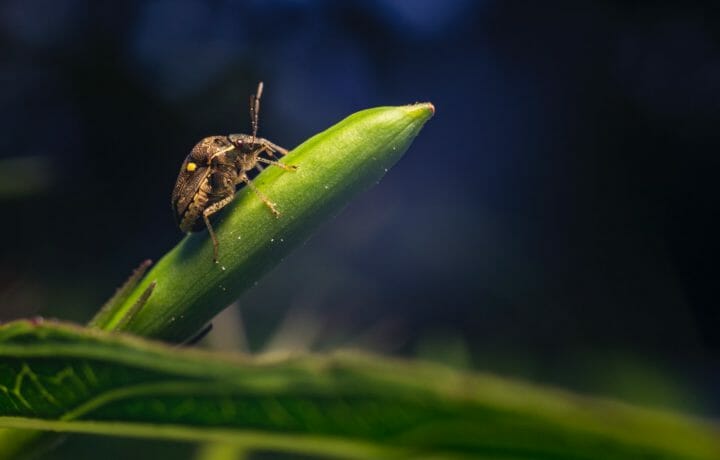It wandered over from somewhere in Mexico sometime in the late 1890s. Its size was less the a quarter inch in length and without going into too much detail, it thrived on warm weather and cotton plants, both of which were plentiful in the United States. In fact, the boll weevil rarely ate anything but cotton and could invade and destroy a field simply by laying their eggs in the cotton and infecting the plant to the point that it stopped growing, which then gave the young beetle larvae, homesteading in the comfort of their nest, something to feed on. Attempts to eliminate the ravaging throngs of these creatures seemed to fail. There was even a song about the insect that went like this:
The Farmer took the boll weevil and put him in the hot sand.
The boll weevil said to the farmer “you are treating me like a man”
The Farmer took the boll weevil and put him on the ice
The boll weevil said to the farmer “this is mighty cool but nice”.
Pesticides did not work on the destructive pests (at least at that time). Farmers were hiring field workers to pick the boll weevil off the plants and in some cases paying them almost as much as the plant itself could earn. That was an exercise in futility, as the pickers simply could not keep up with pace of the infestation. Cotton prices rose because production plummeted (they had to try to make up the difference somehow) and many farmers were down to their last few dollars.
Then something both interesting and spectacular happened. Instead of watching helplessly at their livelihoods being eaten away while waiting for someone to come up with a total annihilation plan, farmers started to diversify their crops. Cotton was partially replaced by peanuts, corn and livestock as a way to continue life as a farmer. Child labor, often used to pick cotton but not so much for the new agricultural activities, not only decreased but also increased opportunities for education over farm labor. Research shows laborers begin to enroll in school at a higher rate than ever, and the disparity between poorer children and their counterparts in terms of attendance shrunk. The boll weevil caused an unintended shift in the cotton-based economy of the South.
Today’s Threat: A similarly drastic cyber infestation
What does this have to do with today and tomorrow? For every boll weevil that attacked a cotton plant, it seems like there is a hacker or group of hackers attacking a computer. Spending money on cybersecurity threats is costing companies millions of dollars each year just like it cost the farmer large sums of money to pick the boll weevil off of their livelihood, the cotton plant. The more money spent on this, the more the cyber criminals, terrorists and spies adapt with new behaviors.
What shift in the economy and workforce will we see because of this new infestation?
A return to closed systems, handwritten memos, and hardback encyclopedias? A shift in educational philosophies in which colleges are offering more applied two year degrees (after students have taken a similar applied learning program in high school), the focus of which is the purpose of protecting networks and detecting and eliminating cyber threats? More opportunities for those who do not have the desire or money to seek out four or five year degrees but love the idea of doing something meaningful and valuable right away in adulthood? Alternatively, potentially, a complete shift in laws and regulations on who can access the internet and at what cost (see closed societies)?
One thing appears to be certain: the boll weevil of this century will not be eradicated anytime soon. How we reacted to the pest 125 years ago should give readers of this article some thought provoking impetus to decide how we react to its digital counterpart today.


